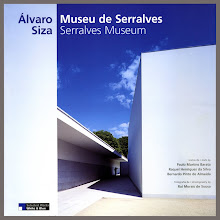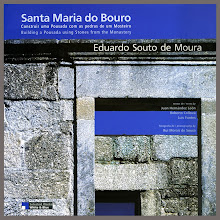..
In search of a weird-looking camera and lens combination?
In search of a weird-looking camera and lens combination?

Leica M2 + 135mm f/2.8 Elmarit-M with Optical Viewing Unit

Leica M2 + 135mm f/2.8 Elmarit-M lens head with Visoflex III
During several decades now, Leitz / Leica have introduced a wide selection of 135mm lenses for their rangefinder cameras, with various formulations and names: Hektor, Elmar, Elmarit, Tele Elmar and, at last, Apo - Telyt.
Some designs have four elements, as the Hektor and the Elmar versions, the later releases support a five elements construction.
The lens in question here was introduced in 1963, and it's design is identical with the early type of the similar lens for the Leicaflex (so I read, never owned a Leicaflex).
It was built by Leitz Canada and had a special view and rangefinder attachment that improves focusing and framing accuracy.
Image size is thereby increased by a factor of 1.4.
Besides, the use of these "goggles" or "spectacles", allows the use of this lens with the Leica M2 camera model: the finder magnifies the 90mm frame to correct field of view for the 135mm (the Leica M2 finder does not show the markings for this focal length).
The lens mount is non rotating and has a socket for tripod use.
Minimal focusing distance is 1,5m or 5".
Minimum aperture is f 32.
The diaphragm has full and half stops, and the lens hood is built in and collapses over the lens front.
Some designs have four elements, as the Hektor and the Elmar versions, the later releases support a five elements construction.
The lens in question here was introduced in 1963, and it's design is identical with the early type of the similar lens for the Leicaflex (so I read, never owned a Leicaflex).
It was built by Leitz Canada and had a special view and rangefinder attachment that improves focusing and framing accuracy.
Image size is thereby increased by a factor of 1.4.
Besides, the use of these "goggles" or "spectacles", allows the use of this lens with the Leica M2 camera model: the finder magnifies the 90mm frame to correct field of view for the 135mm (the Leica M2 finder does not show the markings for this focal length).
The lens mount is non rotating and has a socket for tripod use.
Minimal focusing distance is 1,5m or 5".
Minimum aperture is f 32.
The diaphragm has full and half stops, and the lens hood is built in and collapses over the lens front.

When I decided to buy the 135mm lens for the Leica, it was hard for me to choose between this model and the 135mm f/4 Tele Elmar, which is smaller and lighter (meaning not so clumsy), making it much easier to backpack.
The Tele Elmar also has the convenient filter size of E 39, which is shared by some other Leitz lenses I own.
The Tele Elmar also has the convenient filter size of E 39, which is shared by some other Leitz lenses I own.
Rightly or wrongly, I opted for the 2.8 version, as I very much enjoyed photographing concerts at the time.
I also never really liked the "small view" you get when you look through the 135mm markings on the Leica finder (The M3 finder is better suited in this respect, but it also benefits from the use of this goggled lens, as the finder magnification also gets even bigger with this camera).
As I explained before, it was also an advantage for me to have the possibility to use the lens on the Leica M2, without needing to acquire an external brightline finder.
I also never really liked the "small view" you get when you look through the 135mm markings on the Leica finder (The M3 finder is better suited in this respect, but it also benefits from the use of this goggled lens, as the finder magnification also gets even bigger with this camera).
As I explained before, it was also an advantage for me to have the possibility to use the lens on the Leica M2, without needing to acquire an external brightline finder.


The Visoflex III reflex housing converts rangefinder M Leicas into SLR cameras.
The Visoflex reflex housing overcomes some of the limitations and shortcomings inherent to the rangefinder camera design. It extends the M Leica's versatility into the photomacrographic range, and allows the employment of long telephoto lenses. The groundglass screen permits parallax-free composition, and the choice of two different magnifiers increases freedom in telephotography and close-up work, including copy work. Furthermore, you can use the Focusing Bellows II or several extension rings with the Visoflex III.
The Visoflex III has a quick-mount bayonet similar to the cameras, and you can use it with any Leica M camera (on the Leica M5, simply unscrew the bottom part of the release button).
You will notice on the picture above, a round knob with three colored dots: red, yellow and black.
It is the setting knob for mirror movement, and you can choose the position that better suits your photographic task.
Yellow dot: the mirror moves rapidly and immediately before shutter release (although not exactly a quick-return mirror...).
Black dot: the mirror is swung out slowly with the lever movement, so avoiding camera shake with high-magnification equipment or long focus lenses.
Red dot: the mirror remains locked in the upper position.
(Please notice just near the release lever, the very convenient existence of a thread for cable release).
Although by far not so confortable as a modern SLR, it really widens the scope and practical application possibilities of the Leica M camera.
It is a pity that we don't find it no longer in the Leica Catalogue. If you want one, you have to look for it in the secondhand market.
The Visoflex III has a quick-mount bayonet similar to the cameras, and you can use it with any Leica M camera (on the Leica M5, simply unscrew the bottom part of the release button).
You will notice on the picture above, a round knob with three colored dots: red, yellow and black.
It is the setting knob for mirror movement, and you can choose the position that better suits your photographic task.
Yellow dot: the mirror moves rapidly and immediately before shutter release (although not exactly a quick-return mirror...).
Black dot: the mirror is swung out slowly with the lever movement, so avoiding camera shake with high-magnification equipment or long focus lenses.
Red dot: the mirror remains locked in the upper position.
(Please notice just near the release lever, the very convenient existence of a thread for cable release).
Although by far not so confortable as a modern SLR, it really widens the scope and practical application possibilities of the Leica M camera.
It is a pity that we don't find it no longer in the Leica Catalogue. If you want one, you have to look for it in the secondhand market.

On this image, you can observe the very different position of the Visoflex eyepiece vs. camera eyepiece.

The release lever acts directly on the release button of the Leica.

The Visoflex III shown without the right-way-round 4x observation magnifier
(exchangeable with straight 5x magnifier: side-reversed image).
(exchangeable with straight 5x magnifier: side-reversed image).

The lens head separated from the goggled mount, and the helical focusing mount 16462 for use with the Visoflex.

Lester Bowie (1941-1999) performing with the Art Ensemble of Chicago
(pictured with the 135mm Elmarit in Mannheim, Germany, 1980).
(pictured with the 135mm Elmarit in Mannheim, Germany, 1980).

Escalhão, Portugal, December 31, 1983
(Leica M4-2+135mm f 2.8, Kodak Tri-X, dev. in D-76, dil. 1+1).
(Leica M4-2+135mm f 2.8, Kodak Tri-X, dev. in D-76, dil. 1+1).

Me with Leicas in Escalhão, Portugal, December 31, 1983
(Leica M2, Kodak Tri-X, dev. in Kodak D-76, dil. 1+1).
(Leica M2, Kodak Tri-X, dev. in Kodak D-76, dil. 1+1).
The Leica that you see hanging on my left shoulder is the same M4-2 and Elmarit 135mm that I used to photograph the young "musician" above, on the very same day and on the very same village in North Portugal, not far away from river Douro, the region famous for it's wine, most notably Port Wine, one of the trademarks of our country.
I can't remember who shot my portrait (maybe my ex-wife?), but that person used the very same Leica M2 depicted on this post, probably equiped with a Summicron 50mm.
The other camera hanging around my neck looks like the Leica M3 with the 90mm f/2.8 Tele-Elmarit with rubber lenshood (I don't have the original negative with me here, and the poor resolution of the image is not enough to clearly see, it could also be a Leica M4...).
It is not hard to conjecture that the big Lowepro also transported some other interesting pieces of Photo Gear...
I still own, and try to regularly put into service, all the above equipment.
Only the Minolta Autometer didn't survive the passing of time... I lost it.
(The Lowepro - most likely the original Magnum model, I got rid of the labels - nowadays serves to carry a relatively small flash unit, like the Hensel Monoflash 800, or the lighter, newer version with 500 Ws, the Contra 500).
We spent some pleasant days in Escalhão, in the company of good old friends.
It was rather cold outside, and it was a joy to sit in the evening by the fireplace in the kitchen, tasting some food and wine, just jiving unconcernedly.
(P.S.: without wish of offending, the first photograph on this post makes me think of a portrait of Jean-Paul Sartre...).
I can't remember who shot my portrait (maybe my ex-wife?), but that person used the very same Leica M2 depicted on this post, probably equiped with a Summicron 50mm.
The other camera hanging around my neck looks like the Leica M3 with the 90mm f/2.8 Tele-Elmarit with rubber lenshood (I don't have the original negative with me here, and the poor resolution of the image is not enough to clearly see, it could also be a Leica M4...).
It is not hard to conjecture that the big Lowepro also transported some other interesting pieces of Photo Gear...
I still own, and try to regularly put into service, all the above equipment.
Only the Minolta Autometer didn't survive the passing of time... I lost it.
(The Lowepro - most likely the original Magnum model, I got rid of the labels - nowadays serves to carry a relatively small flash unit, like the Hensel Monoflash 800, or the lighter, newer version with 500 Ws, the Contra 500).
We spent some pleasant days in Escalhão, in the company of good old friends.
It was rather cold outside, and it was a joy to sit in the evening by the fireplace in the kitchen, tasting some food and wine, just jiving unconcernedly.
A quarter of a century has faded away...
The Leicas remain...(P.S.: without wish of offending, the first photograph on this post makes me think of a portrait of Jean-Paul Sartre...).
..



+copy.jpg)
+copy.jpg)
+copy.jpg)
+copy.jpg)
+copy.jpg)
+copy.jpg)